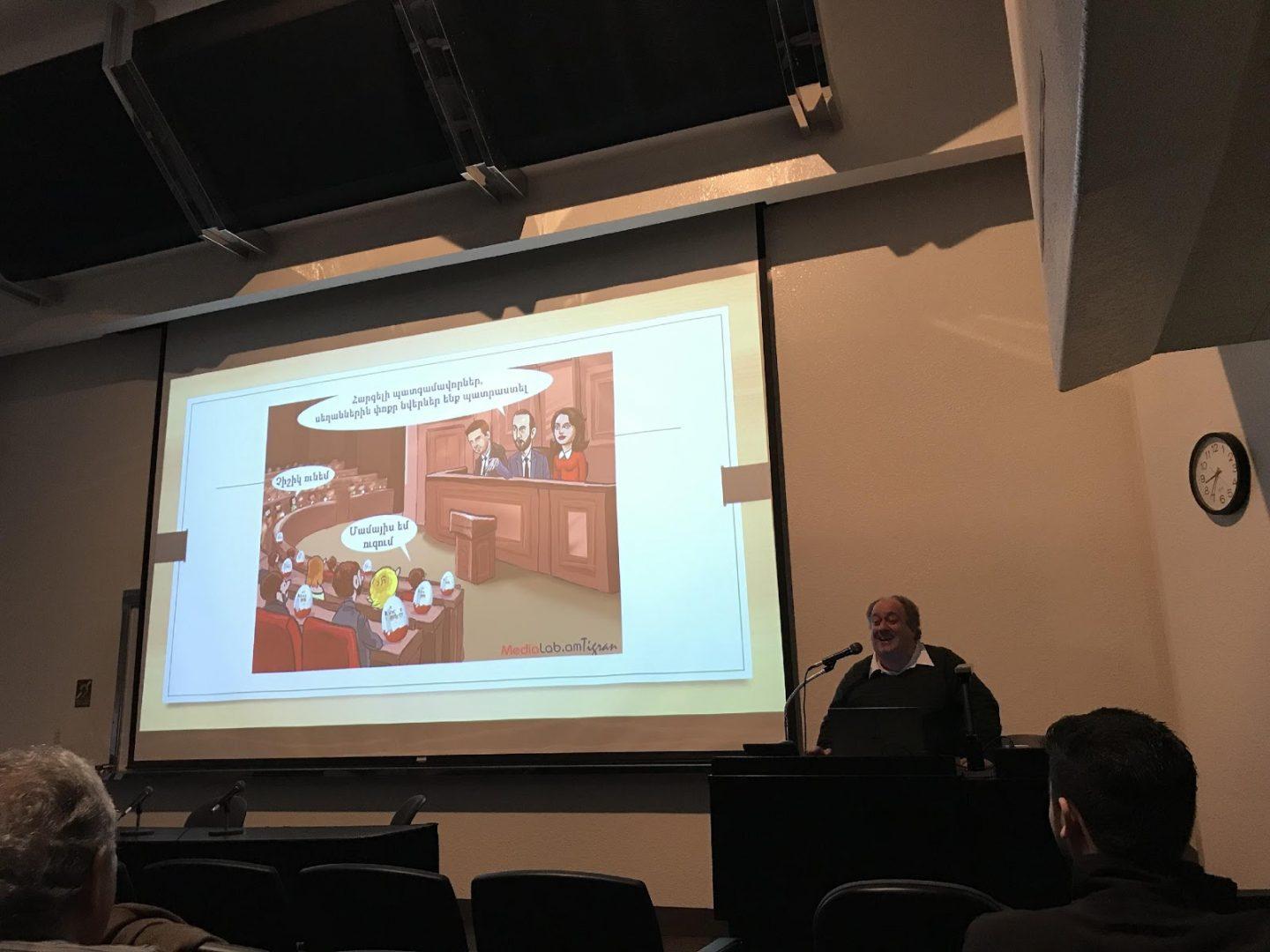The Alice Peters Auditorium hosted a seminar about Armenia’s 2018 Velvet Revolution, one year after its occurrence, which was presented by Dr. Ara Sanjian on Thursday night.
In April 2018, anti-government protests began in Armenia, which were led by Nikol Pashinyan of the Civil Contract Party. This month long protest was deemed Armenia’s Velvet Revolution and was designed to object to Serzh Sargsyan third consecutive term as Armenia’s most powerful leader.
The revolution was a success. Sargsyan resigned a few weeks later, while Pashinyan took the helm in May of that year.
Fast forward to almost a year after the protests, Dr. Ara Sanjian was at the Peter’s Building, home of the Armenian Studies program at Fresno State, educating people on this Velvet Revolution, discussing what happened at the time and what’s happened since.
Sanjian””who is an associate professor of Armenian and modern Middle Eastern History and the director of the Armenian Research Center at the University of Michigan-Dearborn””began the seminar with a holiday tidbit. March 8 is International Women’s Day in Armenia. The 2019 celebration of this holiday would be nothing like last year’s.
“What makes this year different from last year is that this period which follows March 8 was full of anxiety for many people in Armenia,” Sanjian said, remembering the time when the protests were about to begin.
“Go back to March 8, 2018, and we basically were anxious to see what the future was holding for Armenia,” he continued.
But this year is different from the last, Sanjian said, because the Armenia’s Velvet Revolution was unlike any protest that happened in the past.
Looking back at the revolution, Barlow Der Mugrdechian, Berberian Coordinator of Armenian Studies at Fresno State, said, “It’s ‘velvet’ because no one was injured; no one was killed in this peaceful revolution.”
“And that’s unusual in the world today, that governments can be overthrown without violence,” Mugrdechian continued. “Thank God, in Armenia, that has taken place.”
There have been anti-government protests in Armenia before, which Sanjian mentioned in his lecture. Those revolts, however, were unsuccessful, resulting in no governmental change while claiming the lives of many.
“People do not trust their government,” Sanjian said as an explanation to why these protests happen in the first place.
Now, however, there is more confidence because “following the Velvet Revolution, Armenia is now ruled arguably by a new political elite,” Sanjian said.
“Whether you are Armenian or just someone who follows Armenian history and politics””it’s important to know the effects of the Velvet Revolution,” said Carlos Rosas, a Fresno State student who attended the seminar. “What happens in one country could affect the whole world.”




